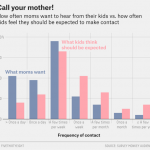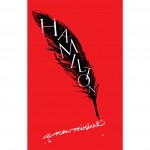E.L. Konigsburg passed away this week, so this whole sequence of Takes is going to be an appreciation of her books, especially my four favorites: The View from Saturday, About the B’nai Bagels, Jennifer, Hecate, Macbeth, William McKinley, and Me, Elizabeth, and From the Mixed-Up Files of Mrs. Basil E. Frankweiler.
And here’s how that last one opens:
Claudia knew that she could never pull off the old-fashioned kind of running away. That is, running away in the heat of anger with a knapsack on her back. She didn’t like discomfort; even picnics were untidy and inconvenient: all those insects and the sun melting the icing on the cupcakes. Therefore, she decided that her leaving home would not be just running from somewhere but would be running to somewhere. To a large place, a comfortable place, an indoor place, and preferably a beautiful place. And that’s why she decided upon the Metropolitan Museum of Art in New York City.
So, of course, the first time I went to the Met (sometime in elementary school), I brought my battered copy of Mixed Up Files and wanted to tour the museum and see exactly the places that Claudia and Jamie had stayed. I nearly passed out from excitement; it was like walking into Hogwarts.
When I applied to college, one of my essays opened by explaining the premise of The View from Saturday:
The team they are playing is composed entirely of eighth graders. The competing team has been preparing for the Academic Bowl through a course of careful study. It is not surprising to find, in this sort of book, that the plucky, dedicated, sixth-grade students win the competition, but the process they go through to win, and the style of Konigsburg’s narrative, is unexpected and full of wonder. After the expositional opening chapter sets the team at the competition, Konigsburg uses the very first question in the match, “What is the meaning of the word calligraphy and from what language does it derive?” as a transition to the first person narrative of the student who answers the question.
The story he tells seems only tangentially related to the question at hand. He does not tell of lengthy review sessions and dedicated study of word origins that taught him the meaning of the word calligraphy, but, rather, the story of a wedding in his grandparents’ senior community. As he continues, it becomes clear that he learned both the art and meaning of calligraphy during his stay, but, by no means, was it the only thing he learned. This pattern is repeated throughout the book, where every “trivia” question is followed by the story of how this concept entered the each of the students’ lives. This is why the sixth-graders win; they haven’t memorized the answers to questions, they’ve lived them.
I love when getting asked a question makes me start looking back through memories, putting them to use, and reliving them. Temple Grandin actually describes a similar process in Thinking in Pictures:
If I let my mind wander, the video jumps in a kind of free association from fence construction to a particular welding shop where I’ve seen posts being cut and Old John, the welder, making gates. If I continue thinking about Old John welding a gate, the video image changes to a series of short scenes of building gates on several projects I’ve worked on. Each video memory triggers another in this associative fashion, and my daydreams may wander far from the design problem. The next image may be of having a good time listening to John and the construction crew tell war stories, such as the time the backhoe dug into a nest of rattlesnakes and the machine was abandoned for two weeks because everybody was afraid to go near it.
Learning isn’t a sometimes process, and it’s delightful to be surprised by the connections you can make.
I loved Claudia’s choice of hiding place, but her brother Jamie was not as enthused. (But I found their squabbling delightful).
“Why did you bother bringing [a compass]? You’re carrying enough weight around already.”
“You need a compass to find your way in the woods. Out of the woods, too. Everyone uses a compass for that.”
“What woods?” Claudia asked.
“The woods we’ll be hiding out in,” Jaime answered.
“Hiding out in? What kind of language is that?”
“English language. That’s what kind.”
“Who ever told you that we were going to hide out in the woods?” Claudia demanded.
“There! You said it. You said it!” Jaime shrieked.
“Said what?
“Said what? I never said we’re going to hide out in the woods.” Now Claudia was yelling, too.
“No! You said hide out in.”
“I did not!”
Jamie exploded. “You did, too. You said, ‘Who ever told you that we’re going to hide out in the woods?’ You said that.”
“O.K. O.K.” Claudia replied. She was trying hard to remain calm, for she knew that a group leader must never lose control of herself, even if the group she leads consists of only herself and one brother brat. “O.K.,” she repeated. “I may have said hide out in, but I didn’t say the woods.”
“Yes sir. You said, “Who ever told you that…”
Claudia didn’t give him a chance to finish. “I know. I know. Now, let’s begin by my saying that we are going to hide out in the Metropolitan Museum of Art in New York City.”
Jamie said, “See! See! You said it again.”
“I did not! I said, ‘The Metropolitan Museum of Art.’”
“You said hide out in again.”
“All right. Let’s forget the English language lessons. We are going to the Metropolitan Museum of Art in Manhattan.”
For the first time, the meaning instead of the grammar of what Claudia had said penetrated.
“The Metropolitan Museum of Art! Boloney!” he exclaimed. “What kind of crazy idea is that?”
[…]
“Of all the sissy ways to run away and of all the sissy places to run away to…” Jaime mumbled.
He didn’t mumble quite softly enough. Claudia turned on him. “Run away to? How can you run away and to? What kind of language is that?” Claudia asked.
“The American language,” Jamie answered. “American James Kincaidian language.”
You saw a reference to About the B’nai Bagels on this blog last week in my post on public speaking (it’s the source of the Fortissimo! advice). But here’s another nice line about friendship:
Sometimes I thought that Hersch was more of a brother to me than Spencer. We each had some bumps in our personalities, but they were in different places and at least they were the same size. That made it good; you need a friend who is a little different from you to rub against. That way you file down each other’s rough edges.
Also, when Claudia and her brother Jamie are planning their escape, the following scene occurs:
“I’ll write you full details of my plan. You must show the plan to no one. Memorize all the details; then destroy my note.”
“Do I have to eat it?” Jamie asked.
“Tearing it up and putting it in the trash would be much simpler. No one in our family but me ever goes through the trash. And I only do it if it is not sloppy and not full of pencil sharpener shavings. Or ashes.”
“I’ll eat it. I like complications,” Jamie said.
Speaking of complications, this is how the Jennifer of Jennifer, Hecate, Macbeth, William McKinley, and Me, Elizabeth goes trick or treating. (My parents did not permit me to try this out myself).
This is the way Jennifer operated:
- She left the wagon outside the door of the house and out of sight of her victim.
- She rang the bell.
- Instead of smiling and saying “trick or treat,” she said nothing when the people came to the door.
- She half fell against the door post and said, “I would like just a drink of water.”
- She breathed hard.
- The lady or man who answered would say, “Of course,” and would bring her a drink of water.
- As she reached out to get the water, she dropped her big, empty bag.
- The lady or man noticed how empty it was and said, “Don’t you want just a little something?”
- The lady or man poured stuff into Jennifer’s bag.
- The lady or man put a little something in my bag, too.
- Jennifer and I left the house.
- Jennifer dumped the treats into the wagon.
- Jennifer clop-clopped to the next house with the bag empty again.
- I walked.
Jennifer did this at every house. She always drank a glass of water. She always managed to drop her empty bag. I asked her how she could drink so much water. She must have had about twenty-four glasses. She didn’t answer. She shrugged her shoulders and walked with her head up, eyes up. I sort of remembered something about a water test for witches. But I also sort of remembered that it was something about witches being able to float on water that was outside their bodies, not water that was inside their bodies.
Rereading all four of these books this week reminded me how much I love Konigsburg in particular and I love younger-than young adult books. Once plots start being driven by romance, the complications get a lot more boring and more of the plot is driven by people just not being direct with each other. There aren’t any serious romances in any of the Konigsburg books, but the protagonists lives are hardly dull. Since there’s not as much rumination and moping, there’s a lot more creativity and collaboration. Each of these books is a pleasure to read at any age.
For more Quick Takes, visit Conversion Diary!













